Hasselblad X2D II 100C Review: Hasselblad Finally Delivers on Its Medium Format Promise
The Hasselblad X2D II 100C builds upon its predecessors in key ways, preserving the aspects that made each prior camera special while smoothing nearly every rough edge. The legendary Swedish photo company has finally delivered a camera that lives up to the X1D’s initial promise.
While there is a groundbreaking new feature on offer, HDR, the X2D II 100C’s overall appeal is not because of any singular change but because all its relatively minor improvements add up to an excellent medium format digital photography experience.
The new camera addresses the complaints I’ve had about handling, the user experience, and autofocus performance, all without compromising on any of its relative strengths. Even better, the X2D II 100C does all that for less money than the original X2D 100C. Yes, that’s right, in the age of terrible tariffs, the new X2D II 100C costs $800 less than its predecessor did at launch in 2022.

Hasselblad X2D II 100C Design and Handling: Small Design Changes Make a Huge Difference
I’ve used a few of Hasselblad’s X cameras over the years, including most recently the X2D 100C in 2022. The X2D 100C is a beautiful camera that feels luxurious in the hands, but it has some significant drawbacks in terms of usability; by far the biggest of which is the lack of a joystick. The X2D 100C forces photographers to either use full area autofocus, which is rarely the ideal choice, or exclusively move the autofocus point around using the thankfully large 3.6-inch rear touchscreen.
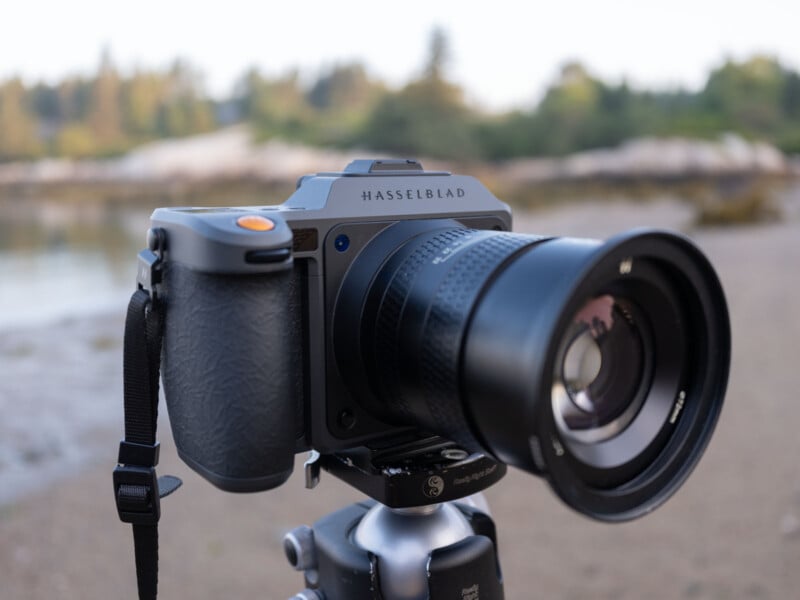
Gratefully, with its fourth mirrorless camera body, the X2D II 100C, Hasselblad has finally added a joystick. This may sound like an overstatement, but this minor addition makes a major difference when it comes to usability.
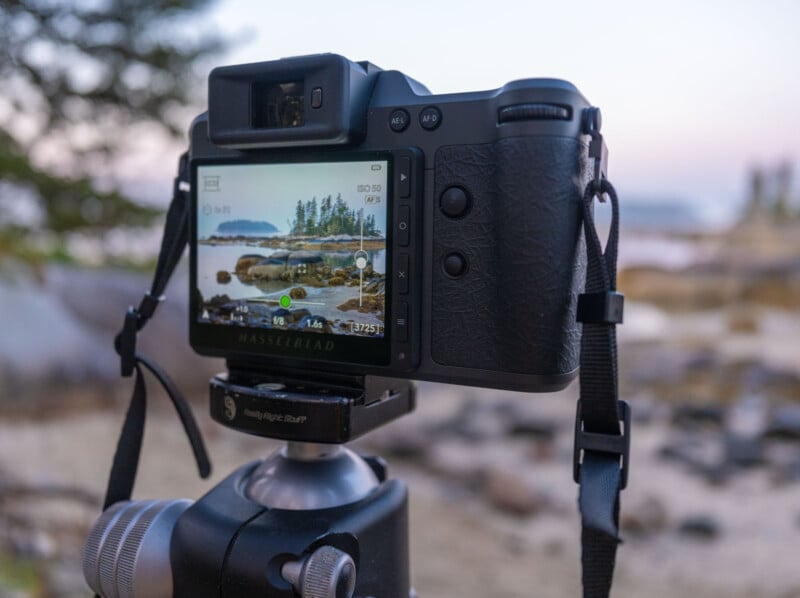
I almost exclusively shoot outdoors, and primarily do landscape, nature, and wildlife photography. This means I’m out in bad weather and during the winter. Most touchscreens, including the one Hasselblad uses, do not work well when it is wet and are inconsistent when wearing gloves. You may already see where this is going, but that means that without a joystick, it is challenging and at times entirely impossible to quickly change the autofocus point while shooting. The X2D II 100C’s joystick alleviates that headache entirely.
![]()
The addition of the joystick also means that I can adjust the focus point while looking through the X2D II 100C’s big, bright, and beautiful OLED EVF. The EVF has 5.76 million dots and 1.00x coverage. I prefer shooting through viewfinders, and now I can do so without worrying about pulling the camera away from my eye to move the focus point around.
The five-directional joystick — ordinal directions plus a press function — is very good. It has haptic feedback, which isn’t necessarily useful, but it sure is cool. That said, thanks in part to the haptics, the joystick feels premium, like everything else about the X2D II 100C.
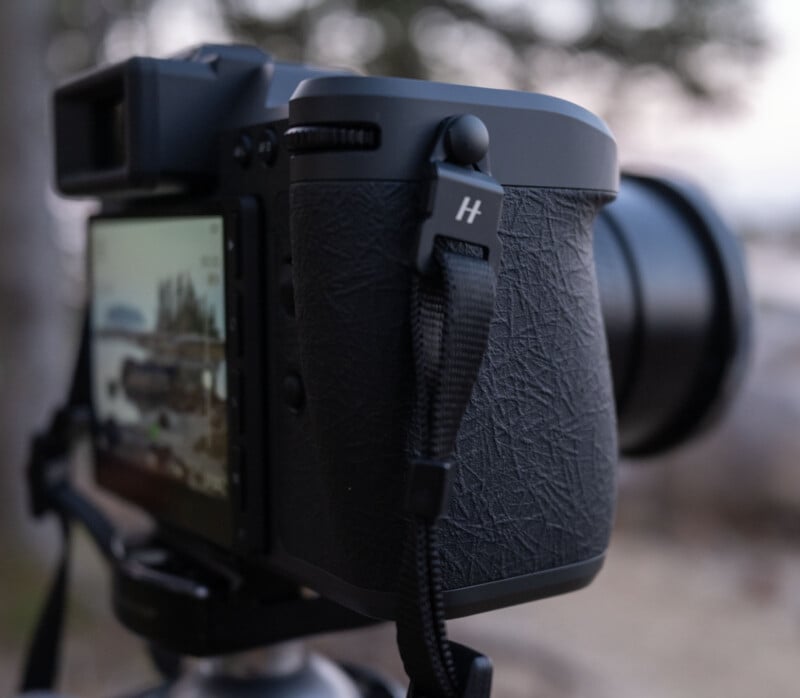
In the relatively rare instances when I prefer to use the massive 3.6-inch rear display to frame and finalize my shots, it is generally a good experience. The OLED panel is vivid, sharp, and bright. To support the X2D II 100C’s HDR photography, the display has P3 color gamut and a peak brightness of 1,400 nits, which is bright enough for nearly every situation.
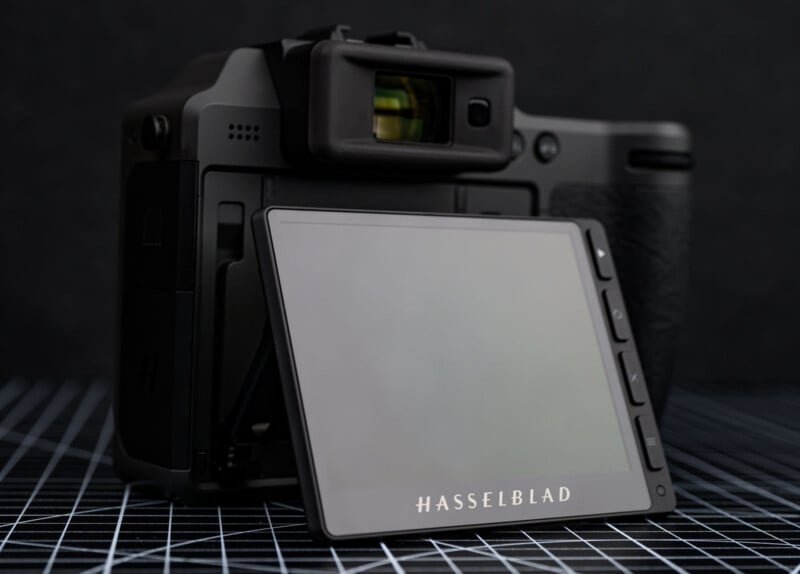
While the display tilts up (90 degrees) and down (43 degrees), like it did on the X2D 100C, it unfortunately does not swivel at all. The tilting display is helpful for landscape orientation photography but utterly useless for portrait shooting.
![]()
While the joystick alone is enough reason for me to be excited about the X2D II 100C’s refined design, there are other changes. The graphite gray body color is slightly different and the “Hasselblad” branding is now black instead of white. The black grip on the camera has a new texture, which I think feels a little more grippy than the X2D 100C’s grip. I don’t love the grip’s new wrinkly texture from an aesthetic perspective, but I could be convinced it looks a little more upscale.
There is also a new custom button below the new joystick, which can be mapped to perform a vast array of functions. I like the default functionality that brings up different autofocus mode settings, so I left it there. The front command dial can now be pressed in, which makes it yet another new custom button. There are eight custom buttons in total.
![]()
A couple of other minor design changes that are nice but might not move the needle much are magnetic side cover panels and a new AF illuminator and self-timer indicator lamp on the front of the camera.
With all these changes, including some notable additions, the X2D II 100C is actually 7.5% lighter than the X2D 100C. The new camera weighs 840 grams (1.85 pounds) with its battery installed. I never found the original X2D 100C to be overly heavy by medium-format camera standards, but I nonetheless welcome the X2D II 100C’s weight loss efforts. The X2D II 100C still has a 1TB internal SSD, by the way, alongside a CFexpress Type B card slot.
![]()
The Hasselblad X2D II 100C, like its predecessors, is beautiful. While a camera that looks good is great, it must also feel good to use. Fortunately, for arguably the first time in the Hasselblad X series, the X2D II 100C is as pleasing to use as it is to look at.
Hasselblad X2D II 100C Autofocus and Performance: This Camera Can Finally Continuously Autofocus
The Hasselblad X2D II 100C addresses yet another massive shortcoming of its predecessors: bad autofocus performance. While the X2D 100C introduced relatively swifter phase-detect autofocus, it still lacked any form of continuous AF. That’s right, it was single-shot AF or bust.


Thankfully, likely due in no small part to the influence of Hasselblad’s majority owner, DJI, the X2D II 100C introduces continuous autofocus. Powered by PDAF, LiDAR, and deep learning, the X2D II 100C can track moving subjects while shooting at up to three frames per second, so long as you’re using the leaf shutter in the attached lens and not the camera’s electronic shutter.
There are limitations to shooting continuously, including a drop from 16-bit RAW capture to 14-bit, but I must note that continuous autofocus is still useful even in single-shot mode. Any movement, either by me, the photographer, or the subject during composition meant I would constantly have to half-press the shutter again to ensure that the focus remained perfect when using the X2D 100C. When shooting at 100 megapixels, even slightly missed focus matters quite a lot, and the X2D II 100C misses focus much less often.

There are limitations to the continuous autofocus, though. The subject detection is effective when the subject is large in the frame but struggles mightily in challenging situations that a professional-grade full-frame camera can handle. For example, when photographing my dog, something like the a9 III never misses a beat, while the X2D II 100C doesn’t even realize there’s a beat to be missed.
That’s a particularly extreme example, but I bring it up to illustrate that continuous AF and AI-powered subject detection is not a panacea. The X2D II 100C is still dealing with a significant amount of data, and Hasselblad’s lenses have seemingly not been designed with fast, continuous autofocus in mind. The camera is faster than before, and fast enough for some things, but still relatively slow.

Speaking of lenses, not all of them are compatible with C-AF at all, and the ones that are, like the XCD 90V I used, require a firmware update to focus continuously. Compatible lenses include the new XCD 35-100E, XCD 25V, XCD 38V, XCD 55V, XCD 90V, XCD 28P, and XCD 75P.
With all that said, while the X2D II 100C’s continuous autofocus is a very welcome addition and entirely competent in many slow-paced situations, the camera is still a far cry from an action camera. While obviously a medium-format mirrorless camera will never be as performant as a contemporary full-frame model, even high-res ones, Hasselblad’s primary competitor in the space, Fujifilm, has demonstrated with its recent GFX cameras that it’s possible to photograph some action at 100 megapixels. That’s not where the Hasselblad X2D II 100C excels, even if it is much better than its predecessors.

On that note, “much better” is perhaps even underselling the real-world impact of the new camera’s autofocus upgrades alongside the new joystick. These two features combine to make the X2D II 100C so much more pleasant to use as a “walking around” camera. Being able to easily move the autofocus point and having the camera actually focus on that point reasonably quickly means that my overall shooting experience was significantly smoother than it was with the X2D 100C. Where the original X2D 100C routinely got in my way, the X2D II 100C doesn’t.


Fantastic Image Stabilization
The X2D 100C’s in-body image stabilization (IBIS) is already very good, rated at seven stops of stabilization, but the new Hasselblad X2D II 100C ups the ante with an improved five-axis IBIS system that promises up to 10 stops of shake correction.
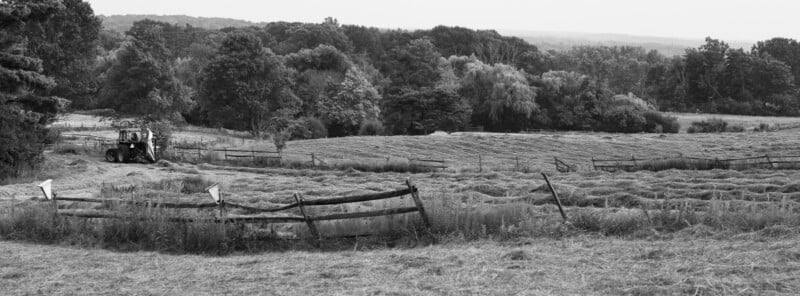

While there are a lot of variables that impact the slowest shutter speed a photographer can achieve, including their handholding technique and the focal length, there is little doubt that the X2D II 100C’s stabilization system is remarkably effective. I wouldn’t rate my technique as spectacular, which is why I usually lug a tripod around. Nonetheless, despite my limitations (and caffeine-induced shakiness), I achieved something I couldn’t quite believe during my time with the X2D II 100C: I captured a sharp image at 2.2 seconds using the 90V lens. While it may not look crystal clear, that’s from diffraction since I had to stop down to f/16, not from camera shake.


That’s an extreme situation, and one I was only doing for testing purposes, but being able to reliably capture sharp handheld shots at more reasonable shutter speeds like 1/2, 1/10, and 1/25 of a second is very useful.
Hasselblad X2D II 100C Image Quality: 100 Megapixels of HDR Glory
The Hasselblad X2D II 100C uses the same back-side illuminated 100-megapixel CMOS as its predecessor, which is definitely not a bad thing. The camera captures massive 11656 x 8742-pixel images in 16-bit RAW, promising 15.3 stops of dynamic range.
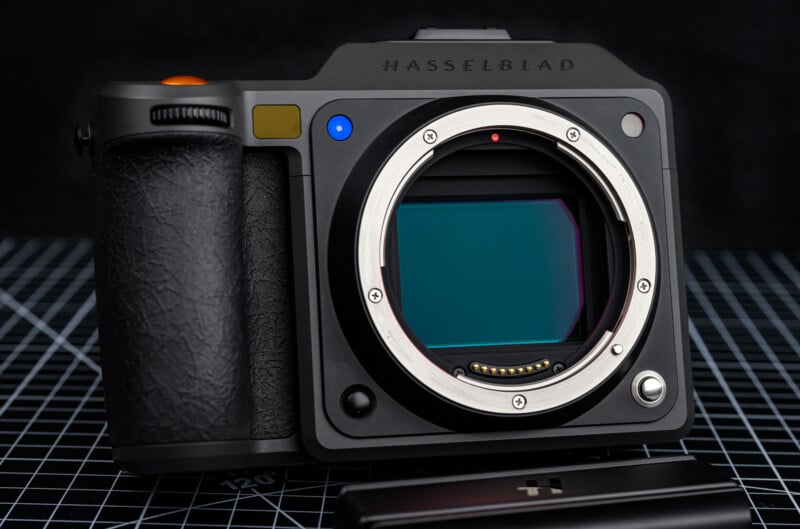


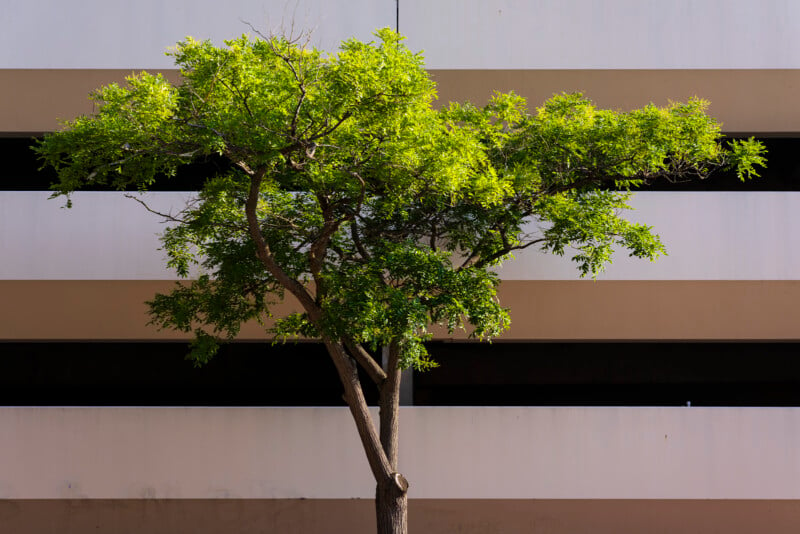


While the sensor is unchanged, the 15.3-stop dynamic range figure is new, up from 15.0 stops on the X2D 100C. I suspect this is due to revised sensor tuning on the software side, but perhaps it’s related to the HDR mode. In either case, we’re splitting hairs here, but image quality is technically a little bit better in situations when it is possible and appropriate to shoot at the new base ISO of 50, which is down from 64. 15 stops, 15.3 stops; it doesn’t much matter because the key takeaway is that the X2D II 100C’s dynamic range is absurdly good.
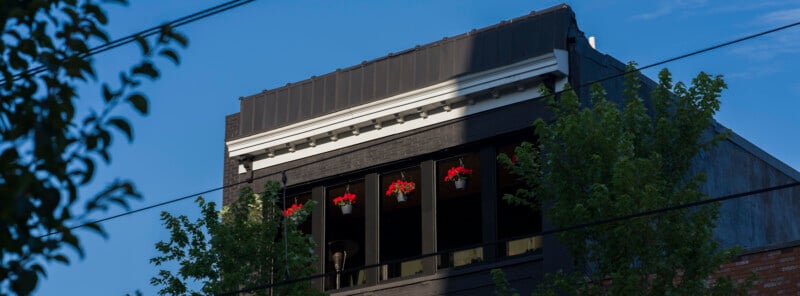
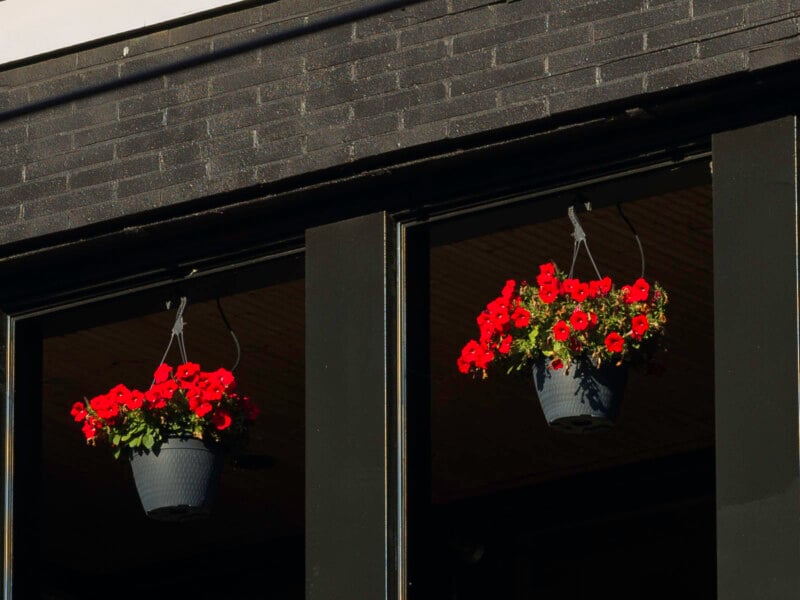
Although I’m in well-trodden territory at this point, given that we’ve seen this same basic 100-megapixel sensor a few times now in different cameras, it’s a superb image sensor for photography. When paired with high-quality glass, like all of the (pricey) lenses Hasselblad makes, the sensor delivers outstanding resolution that easily outpaces even the best full-frame cameras.
You need to pixel-peep or make huge prints to truly appreciate the difference, but it absolutely exists. As for whether it’s worth the expense and compromises is another question altogether, but there is no doubting the X2D II 100C’s incredible image quality.





A big part of Hasselblad’s sales pitch for its cameras is the company’s “Hasselblad Natural Color Solution (HNCS).” This color management solution, developed by Hasselblad itself about 20 years ago, promises to render true-to-life, accurate colors with class-leading tonal transitions. When you shoot with a Hasselblad camera, including the X2D II 100C, you get HNCS and that’s that. This is how the camera operates, and you’re along for the ride: no in-camera color profiles, no film emulations, no filters, no nothing.
On the one hand, I appreciate the flexibility to be creative with my colors in-camera. On the other hand, the results from Hasselblad’s Natural Color Solution are invariably fantastic. As has been the case when I’ve shot with other Hasselblad cameras, I found myself making very few tweaks to my RAW files.
Could I tweak them, though? Yes, absolutely. The 16-bit RAW (.3FR) files are effortless to work with, and it’s possible to recover considerable shadow and highlight detail and adjust colors to my heart’s content. But as much or more than any other camera’s RAW files, I like what the X2D II 100C gives me from the jump.




Hasselblad promises that HNCS delivers a “film-like image quality with true-to-life, wide-ranging contrast,” and it’s hard to argue. “Film-like” perhaps opens up a can of worms, but the general sentiment is accurate; the X2D II 100C’s image quality is fantastic with next to no fussing around. And in the situations when I want to tinker, I can do so without worrying about destroying the file.
At least that’s true when shooting at or near base ISO. What about high ISO? This is a challenging situation for nearly any camera, but especially one with 100 megapixels. At a high ISO, like 6400 for example, the X2D II 100C delivers noticeably noisy files. There’s no getting around it, they’re grainy.



However, when it comes to image quality, I care much less about the quantity of grain than I do about the quality of it. Not all noise is made equal, and there is a massive difference between certain types of grain.
In the case of the X2D II 100C, noise is mostly uniform in size and color, with some occasional minor banding at really high ISO settings. I would not hesitate to use the X2D II 100C at ISO 1600, 3200, or even 6400 if the situation requires it. You’re giving up resolution and dynamic range when you push the camera that high, of course, but you are not throwing image quality altogether to the wolves. High ISO photos still look good.
If you’re a PetaPixel member, you can download our full-resolution laboratory test shots from the X2D II 100C at different ISO settings and see for yourself either in Hasselblad’s free Phocus software or compatible RAW editors, like Adobe Lightroom and Adobe Camera Raw.
HDR: The X2D II 100C Is the First Medium Format Camera With End-to-End HDR
One of the X2D II 100C’s key new features is its HDR capability. Smartphones have had HDR cameras for many years, and more and more interchangeable lens cameras are starting to dabble with HDR image capture (a single file with expanded dynamic range, by the way, not the multi-shot HDR photography that was all the rage over a decade ago). But the X2D II 100C is the first medium format camera to take the HDR plunge, and it has cascading effects across the camera and its associated software.
The camera’s HNCS HDR mode works by expanding the exposure latitude at the highlight end. Everything else about the image remains essentially the same, but the brights are a bit brighter, at least when viewed on compatible displays. It doesn’t do the old-school HDR thing of making shadows brighter and highlights darker, essentially flattening out the entire scene. The X2D II 100C’s HDR mode just elevates the very top-end of the histogram a bit more.

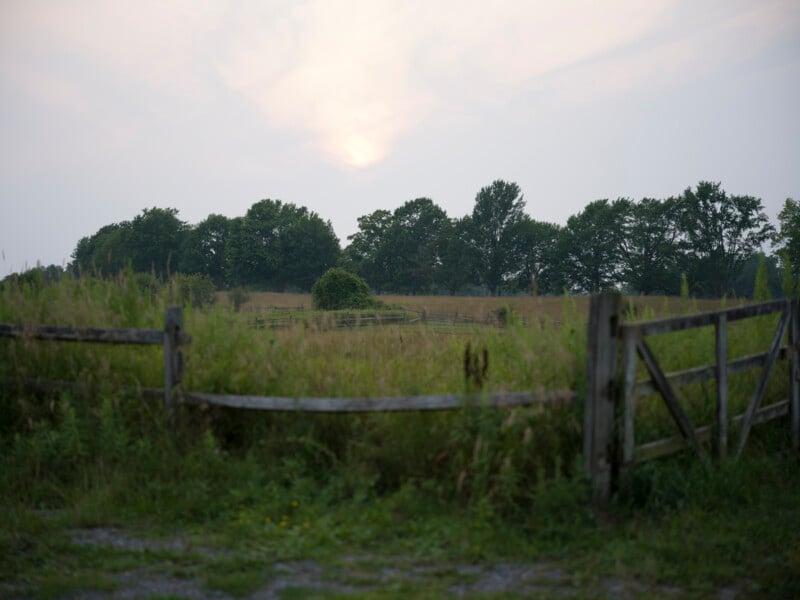

The X2D II 100C can process HDR files in-camera as Ultra HDR JPEG files or HDR HEIF, and the files can be viewed and processed on compatible software, like Hasselblad’s own offerings. In the new version of Phocus on desktop, which I used in beta for this review, it’s possible to simply toggle HDR on when adjusting photos captured using the X2D II 100C. Easy-peasy.
It’s essential to make a few notes here, though. HDR cannot be used when shooting in full manual mode or when using the electronic shutter for some reason. Further, the HDR JPEG files are reasonably versatile but still not widely viewable. They can be seen on the camera itself, the Phocus Mobile 2 app, Phocus on desktop, Adobe Lightroom and Photoshop, and other unspecified third-party software. HDR HEIF files, on the other hand, are even more limited and can only be viewed on the camera, Phocus, and Adobe Lightroom, at least for now.
It’s also vital to consider why you might want to capture HDR photos in the first place. It’s an entirely useless feature if your primary output is print, for example. However, you don’t actually lose anything by shooting HDR since you can just access the SDR version of the file anyway. HDR viewing support is also not widespread yet. While some devices and apps can display HDR images, it’s a mixed bag.
In the ideal situation and with the right photo, like one that has very bright highlight regions, the X2D II 100C’s HDR photo looks very striking. I had a lot of fun looking at my HDR photos in Phocus on my MacBook because the images pop in a way SDR ones cannot. It’s a great feature, but I still wouldn’t use it all the time. My tune will inevitably change once HDR workflows become commonplace, but for now, the X2D II 100C is ahead of the curve on this topic. The camera’s HDR functionality islaudable, even if it’s not always practical.
Unfortunately, there is no suitable way for me to demonstrate the appeal of the X2D II 100C’s HDR images in this article. The best I can do is express that the HDR photos genuinely look good and invite readers who are PetaPixel members with HDR-compatible displays to download our sample images and open them in the newest version of the Hasselblad Phocus software, which should be available publicly very shortly. I am using version 4.0. The free software allows you to toggle HDR on from within the “Adjust” tab.

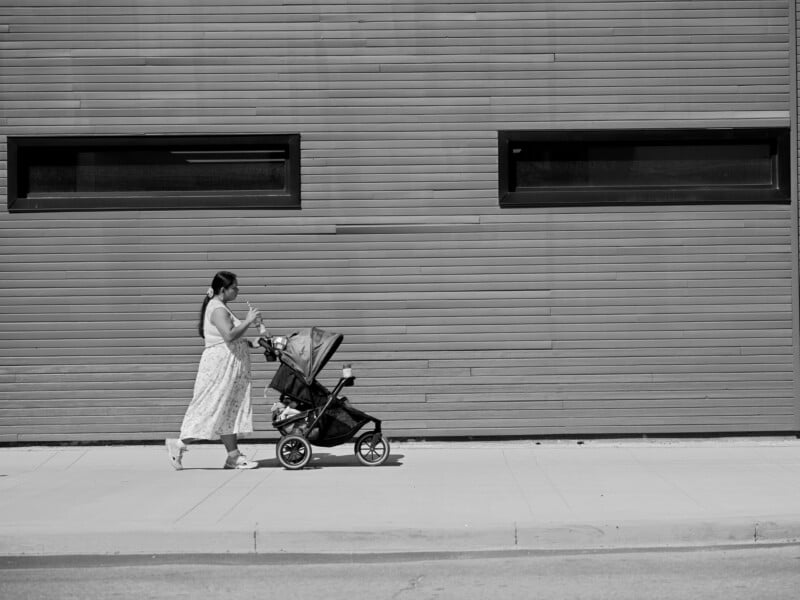



Where the Hasselblad X2D II 100C Excels and Where It Comes Up Short
The Hasselblad X2D II 100C is an imperfect camera, but it’s one I thoroughly enjoyed using. For the types of photography I enjoy most and the ways I prefer to work, the X2D II 100C is nearly perfect.
However, even though the X2D II 100C is much more versatile than its predecessors, and therefore more successful at a broader range of applications, it is still not a camera that thrives in every situation. Far from it.
The X2D II 100C’s autofocus is much better, but still relatively slow. The camera’s continuous shooting performance is finally at least competent, but it’s still not well-suited to fast-paced action. The image quality is spectacular, but overkill for most situations. The camera is genuinely pleasant to use, but it remains relatively larger and more expensive than full-frame cameras, many of which are also capable of excellent image quality and resolution.
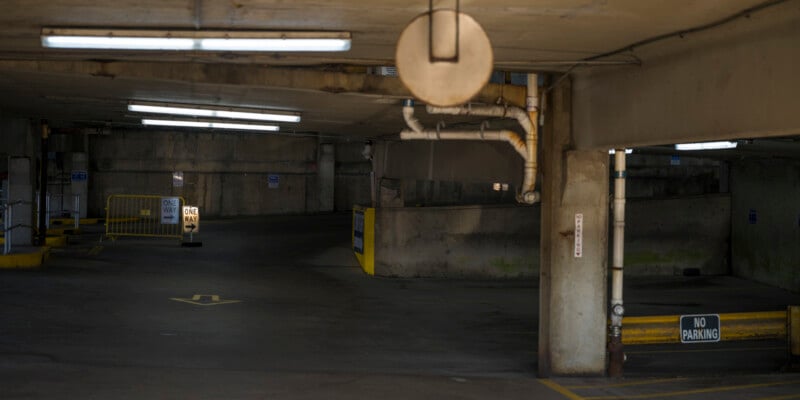
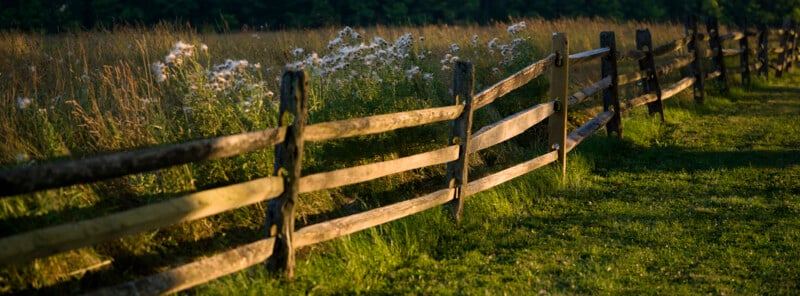
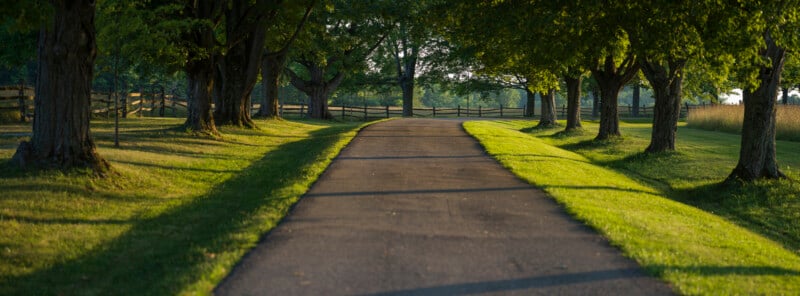
And yet, even with all these caveats and limitations, shorter though the list may be than with any Hasselblad camera before, there was not one time when I was unhappy when pressing the X2D II 100C’s bright orange shutter.
Granted, I’ve been around the block with cameras like this and have shot medium format personally for nearly a decade, so I am fully aware of the format’s limitations. So too am I aware of its strengths, and the Hasselblad X2D II 100C realizes these strengths better than any of Hasselblad’s prior X series cameras. This is, finally, the camera that shows what the Hasselblad X family can be and what it can do.
For photographers who prioritize image quality and the user experience above all else — speed be damned — the Hasselblad X2D II 100C is a spectacular camera.



But it won’t come cheaply, even if the X2D II 100C is surprisingly $800 less than its predecessor. It’s still $7,399 for the body, and Hasselblad’s lenses range from nearly $2,000 to around $6,000. That’s a hefty chunk of change in any economic climate, let alone the one we’re in now. It’s not a plunge I’d personally take, although I’d be lying if I said I’m not envious of those who ultimately will.
Are There Alternatives?
For those who care deeply about image quality and are willing to pay the price, both literally and figuratively, there are only a few options out there. We can scratch one off the list right off the bat, though. There is no reason whatsoever to get the original Hasselblad X2D 100C. The new model is cheaper and better in every way.
There is significant competition in the form of the Fujifilm GFX system, though. At $8,299, the Fujifilm GFX 100 II is more expensive than the X2D II 100C but it has the same 102-megapixel image sensor, better overall autofocus performance, faster shooting speeds, way better video since the X2D II 100C doesn’t record video at all, a more traditional camera design and user experience, and a wider range of affordable lenses.
Then there is the $5,499 GFX 100S II, which is almost as good as the GFX 100 II and offers better value for photographers. I’ve argued before that the GFX 100S II is the best camera for photographers who care about image quality.
In terms of that image quality, there is not much to differentiate the X2D II 100C from Fujifilm’s latest GFX cameras. The X2D II 100C’s image quality is arguably more impressive with less work, but you can essentially end up in the same place with either camera system. I also don’t put much stock in the X2D II 100C’s HDR yet, even though it is impressive.
Should You Buy the Hasselblad X2D II 100C?
![]() Maybe. I always hate landing on “maybe” when answering this ever-important question, but I don’t see any way around it with the Hasselblad X2D II 100C.
Maybe. I always hate landing on “maybe” when answering this ever-important question, but I don’t see any way around it with the Hasselblad X2D II 100C.
If you are already invested in the Hasselblad X system and have $7,400 to spend on a new camera, then you should absolutely buy the X2D II 100C. It is a meaningful upgrade in basically every way, whether in terms of sheer imaging performance compared to Hasselblad’s two 50-megapixel X series cameras, or in terms of overall usability when compared to 2022’s X2D 100C. If there is any Hasselblad X camera to own, it is undeniably this one.
If you are not already a Hasselblad shooter and considering buying your first medium format mirrorless camera system, the answer to whether you should buy the X2D II 100C is probably no. Even though the X2D II 100C is by far the most performant camera Hasselblad has released in the mirrorless era, its prowess still comes with too many asterisks.
All that said, even though it’s a tough camera to recommend to everyone, the X2D II 100C is still very good. I’m confident that anyone who buys one, fully understanding its limitations, will love it.